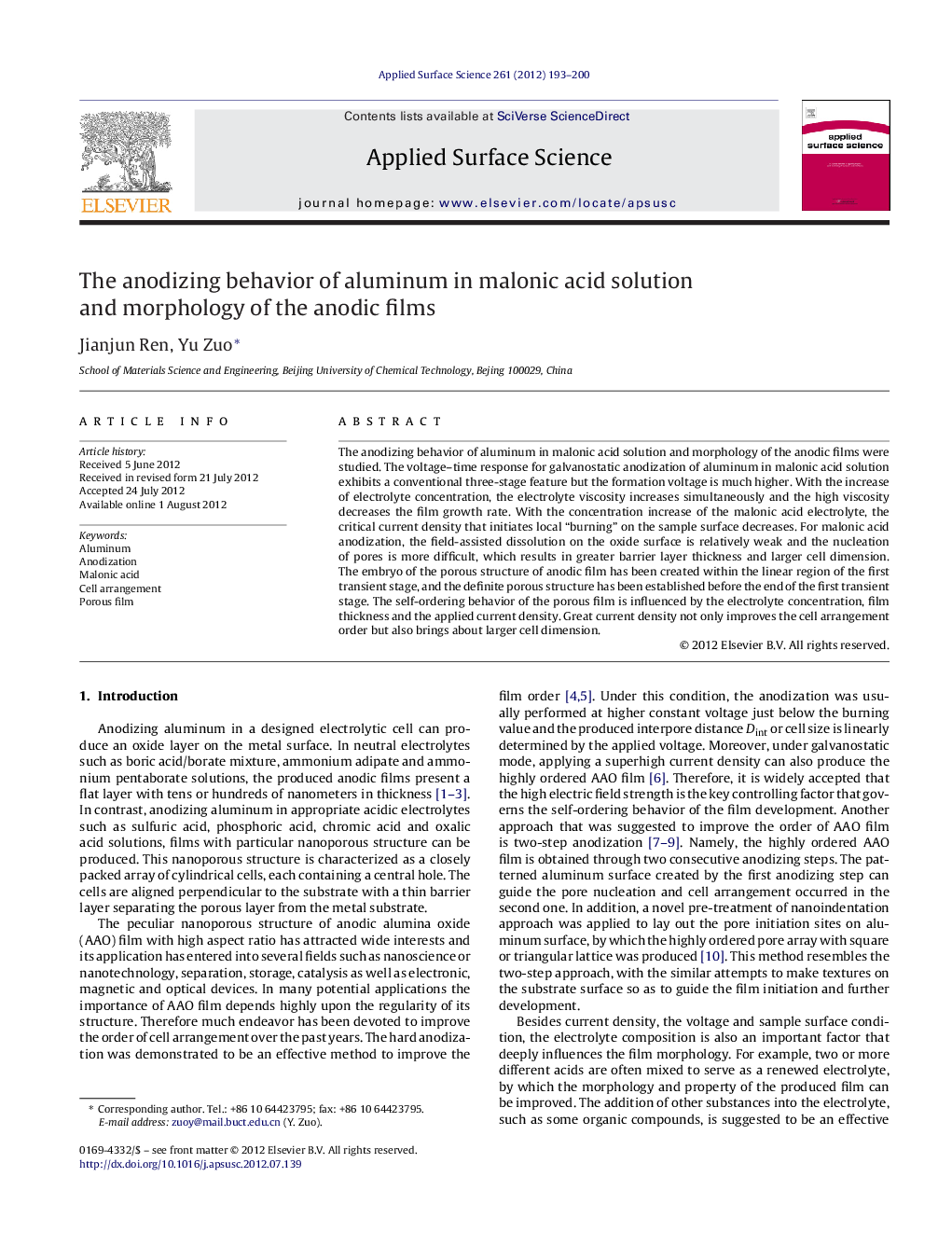| کد مقاله | کد نشریه | سال انتشار | مقاله انگلیسی | نسخه تمام متن |
|---|---|---|---|---|
| 5364526 | 1503702 | 2012 | 8 صفحه PDF | دانلود رایگان |

The anodizing behavior of aluminum in malonic acid solution and morphology of the anodic films were studied. The voltage-time response for galvanostatic anodization of aluminum in malonic acid solution exhibits a conventional three-stage feature but the formation voltage is much higher. With the increase of electrolyte concentration, the electrolyte viscosity increases simultaneously and the high viscosity decreases the film growth rate. With the concentration increase of the malonic acid electrolyte, the critical current density that initiates local “burning” on the sample surface decreases. For malonic acid anodization, the field-assisted dissolution on the oxide surface is relatively weak and the nucleation of pores is more difficult, which results in greater barrier layer thickness and larger cell dimension. The embryo of the porous structure of anodic film has been created within the linear region of the first transient stage, and the definite porous structure has been established before the end of the first transient stage. The self-ordering behavior of the porous film is influenced by the electrolyte concentration, film thickness and the applied current density. Great current density not only improves the cell arrangement order but also brings about larger cell dimension.
⺠The definite porous structure has been formed within the first transient stage. ⺠The critical current density for local burning decreases with acid concentration. ⺠The super-high current density improves the cells order greatly. ⺠The higher electrolyte viscosity decreases the film growth rate.
Journal: Applied Surface Science - Volume 261, 15 November 2012, Pages 193-200